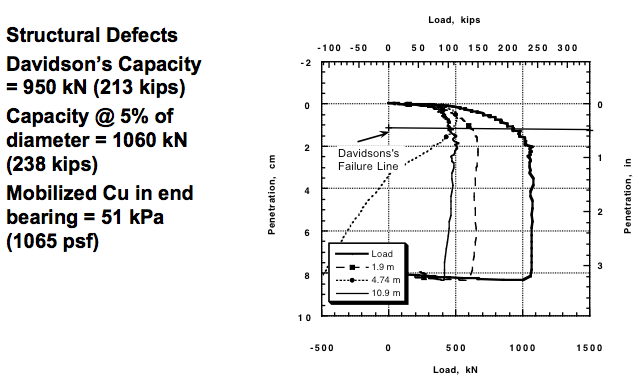Load tests were performed in general accordance with American Society for Testing and Materials ASTM D1143 Test Method for Piles Under Axial Compressive Load ASTM . All tests were performed late at night or early morning to minimize thermal effects. Load was applied using a 300 ton hydraulic ram acting against a reaction beam, which was anchored to each of the reaction shafts using Dywidag bars.
The quick load test method was used. All load tests were carried to plunging failure. Load was applied in 10 kip increments, up to a deformation approximately equal to 10% of the shaft diameter (3.6 in). Each increment was maintained for 150 s. The hydraulic ram was equipped with a manually controlled electric pump, which allowed for application of a constant load, even during plunging failure. Test Shaft 4 was retested approximately 8 h after the initial compression test.
Load was measured using two load cells, and shaft-head displacement was recorded using three LVDTs. Data was recorded at a 10 Hz frequency and the average was stored once every 10 s. The LVDTs were connected to a stationary reference beam.
Test Shafts 2 and 4 were provided with ten sister bars measuring the strain at 10 ft intervals, with two sister bars at each depth. Sister bars consisted of full-arm strain gage bridge circuit, mounted on a rebar rod, with full development length on each side of the strain gages.
Summary of Load Test Results
Effect on Skin Friction
|
Effects on End Bearing
|
Load Test- Shaft 2
 Load Test- Shaft 4
Load Test- Shaft 4
Load Test- Shaft 4-Reload
Primary Reference
- Iskander, M., Roy, D., Kelley, S., and Ealy, C. (2003). ”Drilled Shaft Defects: Detection, and Effects on Capacity in Varved Clay.” Journal of Geotechnical and Geoenvironmental Engineeering, 129(12), 1128–1137 [link]


